C#之WPF学习之路(2)
目录
控件的父类
DispatcherObject类
DependencyObject类
DependencyObject 类的关键成员和方法
Visual类
Visual 类的主要成员和方法
UIElement类
UIElement 类的主要成员和功能
FrameworkElement类
FrameworkElement 类的主要成员和功能
控件的父类
在 WPF (Windows Presentation Foundation) 框架中,控件的父类们形成了一个层次结构,其中最重要的父类是 DispatcherObject。虽然在整个 .NET 框架中,DispatcherObject 只是居于次要地位,但在 WPF 中却扮演着至关重要的角色,用于处理对象与 Dispatcher 之间的关联,确保 UI 元素的正确更新。
除了 DispatcherObject,WPF 控件的父类们还包括 DependencyObject、Visual、UIElement 和 FrameworkElement。这些父类通过多层次的继承关系,为不同类型的控件提供了各种不同的功能和行为。
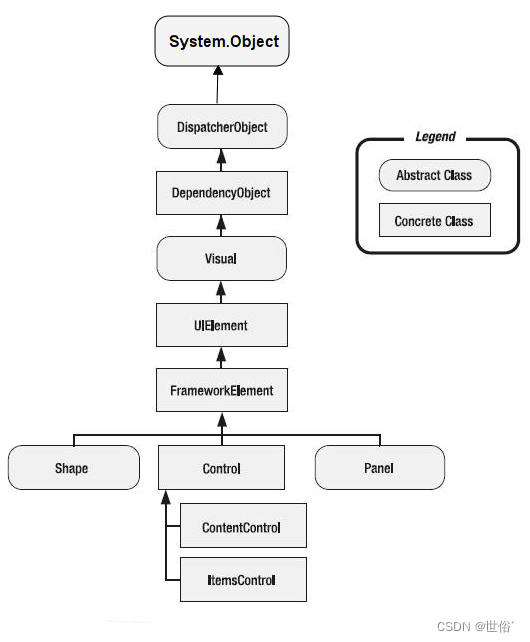
控件的继承结构形成了一棵树,使得 WPF 框架具有高度的灵活性和可扩展性,同时也体现了微软工程师们在设计框架时的经典和合理的代码架构。
DispatcherObject类
DispatcherObject 类是 WPF 中非常重要的一个基类,位于 System.Windows.Threading 命名空间中。它的作用是管理对象与 Dispatcher 之间的关联,以确保对象在 UI 线程上正确地进行操作。在 WPF 中,UI 元素必须在创建它们的线程上进行访问和更新,而 DispatcherObject 提供了一种机制来实现这一点。
1、Dispatcher 关联:
- DispatcherObject 类是与 Dispatcher 相关的,Dispatcher 负责管理与线程关联的消息队列。每个 DispatcherObject 都与一个特定的 Dispatcher 实例相关联,通过 Dispatcher 对象可以访问线程相关的上下文信息,以确保对象的操作在正确的线程上执行。
2、线程安全性:
- 由于 DispatcherObject 对象与特定的 UI 线程关联,它们可以确保对象的属性访问和方法调用都在正确的线程上执行,从而避免了多线程并发访问时可能出现的问题,比如线程冲突和资源竞争。
3、UI 元素更新:
- WPF 中的大部分 UI 元素都直接或间接地继承自 DispatcherObject,这使得它们能够在 UI 线程上进行更新,包括属性更改、界面重绘等操作。这样可以确保界面的响应性和一致性。
4、异步操作:
- 通过与 Dispatcher 的关联,DispatcherObject 还提供了一种执行异步操作的机制,可以使用 Dispatcher.Invoke 或 Dispatcher.BeginInvoke 方法来在 UI 线程上执行操作,从而避免了阻塞 UI 线程。
5、应用场景:
- DispatcherObject 主要用于 WPF 中需要与 UI 元素交互的类,比如窗口、控件、动画等。在开发过程中,通常不需要直接实例化 DispatcherObject 类,而是通过继承的方式来间接使用其功能。
总之,DispatcherObject 类的主要责任是管理对象与关联的 Dispatcher 之间的关系,并提供方法来检查和验证访问对象的线程权限。
- 提供对当前 Dispatcher 的访问权限:DispatcherObject 提供了 Dispatcher 属性,该属性允许派生类访问对象所关联的当前 Dispatcher。通过这个属性,派生类可以获得与 UI 线程关联的 Dispatcher 实例,并使用它来在正确的线程上更新 UI 元素。
- 提供线程访问权限的检查和验证:DispatcherObject 提供了 CheckAccess 和 VerifyAccess 方法,用于检查当前线程是否有权访问对象。CheckAccess 方法返回一个布尔值,表示当前线程是否有权访问对象,而 VerifyAccess 方法则在线程无权访问对象时引发异常。通过这两个方法,派生类可以在访问对象之前验证当前线程的访问权限,从而确保对象的访问和更新操作在正确的线程上进行。
DispatcherObject 类通过管理与 Dispatcher 的关联,并提供线程访问权限的检查和验证方法,确保对象的操作在正确的线程上执行,从而保证了 WPF 应用程序的稳定性和性能。
代码示例:
MainWindow.xaml:
<Window x:Class="WpfApp2.MainWindow"xmlns="http://schemas.microsoft.com/winfx/2006/xaml/presentation"xmlns:x="http://schemas.microsoft.com/winfx/2006/xaml"xmlns:d="http://schemas.microsoft.com/expression/blend/2008"xmlns:mc="http://schemas.openxmlformats.org/markup-compatibility/2006"xmlns:local="clr-namespace:WpfApp2"mc:Ignorable="d"Title="学习之路" Height="450" Width="800"><Grid><Button Content="启动后台任务" HorizontalAlignment="Center" VerticalAlignment="Center" Click="Button_Click"/><TextBlock x:Name="ResultTextBlock" Text="" HorizontalAlignment="Center" VerticalAlignment="Center" Margin="0,50,0,0"/></Grid>
</Window>
MainWindow.xaml.cs:
using System;
using System.Threading;
using System.Windows;namespace WpfApp2
{/// <summary>/// 主窗口.xaml的交互逻辑/// </summary>public partial class MainWindow : Window{public MainWindow(){InitializeComponent();}private void Button_Click(object sender, RoutedEventArgs e){// 启动一个新线程来执行后台任务Thread thread = new Thread(BackgroundTask);thread.Start();}private void BackgroundTask(){// 模拟后台任务Thread.Sleep(2000);// 在后台线程中更新 UI 元素Application.Current.Dispatcher.Invoke(() =>{// 通过 DispatcherObject 更新 UI 元素ResultTextBlock.Text = "后台任务已完成";});}}
}
当用户点击按钮时,将会启动一个后台线程执行后台任务,然后在任务完成后,通过 Dispatcher.Invoke 方法,在 UI 线程上更新 ResultTextBlock 的内容,以显示任务已完成的信息。
DependencyObject类
DependencyObject 是 WPF 中非常重要的基类之一,它提供了一种依赖属性和依赖项之间关联的机制,是 WPF 中实现数据绑定、样式、模板、动画等高级功能的基础。
- 依赖属性:DependencyObject 支持依赖属性的定义和使用。依赖属性是一种特殊类型的属性,它具有与之关联的值,可以通过数据绑定、动画、样式等方式进行设置和获取。依赖属性的一个重要特性是其值可以在不同的元素之间共享和传递,从而实现了数据的自动更新和同步。
- 依赖项:DependencyObject 以及其派生类被称为依赖项,因为它们支持依赖属性,并且能够参与属性值的计算、传递和更新。每个 DependencyObject 实例都维护一个与之关联的属性表,用于存储依赖属性的值和相关的元数据信息。
- 线程安全性:与 DispatcherObject 不同,DependencyObject 并没有与特定的线程关联,因此它的操作并不受 UI 线程的限制。这意味着你可以在任何线程上创建、修改 DependencyObject 的实例,而不必担心线程安全性问题。
- 应用场景:DependencyObject 主要用于 WPF 中的可视化元素,比如窗口、控件、布局容器等。通过使用依赖属性,可以实现诸如绑定、动画、样式等丰富的 UI 功能,使得应用程序的开发变得更加灵活和高效。
- 派生类:除了直接使用 DependencyObject 外,还可以通过创建自定义的派生类来扩展其功能。通过派生类,可以定义自己的依赖属性,并实现与其他 WPF 元素的交互和集成。
总之,DependencyObject 类是 WPF 中实现高级 UI 功能的关键之一,通过支持依赖属性的定义和使用,它为 WPF 应用程序提供了丰富的数据绑定、样式、模板、动画等功能,为开发人员提供了强大的工具和技术来创建现代化、交互式的用户界面。
DependencyObject 类的关键成员和方法
DependencyObject 类的定义包括了一系列方法和属性,其中最常用的是 GetValue 和 SetValue 方法,用于获取和设置依赖属性的值。
以下是 DependencyObject 类的关键成员和方法:
- DependencyObjectType:获取当前 DependencyObject 的 DependencyObjectType 对象,用于表示该对象的类型信息。
- IsSealed:获取一个值,该值指示此 DependencyObject 是否为不可变的。当对象被封闭(sealed)时,其属性不能被修改。
- GetValue(DependencyProperty dp):获取指定依赖属性的值。由于不确定属性值的类型,因此该方法返回一个 object 类型的值。
- SetValue(DependencyProperty dp, object value):设置指定依赖属性的值。第一个参数 dp 表示要设置的依赖属性,第二个参数 value 表示要设置的新值。
- ClearValue(DependencyProperty dp):清除指定依赖属性的值,将其重置为默认值。
- ClearValue(DependencyPropertyKey key):通过提供属性的密钥来清除指定依赖属性的值。
- CoerceValue(DependencyProperty dp):强制重新计算指定依赖属性的值。
- GetLocalValueEnumerator():获取一个枚举器,用于遍历此对象上的所有本地属性值。
- ReadLocalValue(DependencyProperty dp):获取指定依赖属性的本地值。
- SetCurrentValue(DependencyProperty dp, object value):设置依赖属性的当前值,而不影响该属性的原始值。
- OnPropertyChanged(DependencyPropertyChangedEventArgs e):当依赖属性的值发生变化时调用的虚拟方法,用于在派生类中处理属性值更改的通知。
- ShouldSerializeProperty(DependencyProperty dp):确定指定的依赖属性是否应该在序列化时进行持久化。
总之,DependencyObject 类提供了一系列方法和属性,用于管理依赖属性的值,以及处理属性值的变化通知。
代码示例:
MainWindow.xaml:
<Window x:Class="WpfApp2.MainWindow"xmlns="http://schemas.microsoft.com/winfx/2006/xaml/presentation"xmlns:x="http://schemas.microsoft.com/winfx/2006/xaml"xmlns:d="http://schemas.microsoft.com/expression/blend/2008"xmlns:mc="http://schemas.openxmlformats.org/markup-compatibility/2006"xmlns:local="clr-namespace:WpfApp2"mc:Ignorable="d"Title="学习之路" Height="450" Width="800"><Grid><Button Content="点我" Click="Button_Click" Margin="327,192,327,192"/></Grid>
</Window>
MainWindow.xaml.cs:
using System.Windows;namespace WpfApp2
{public partial class MainWindow : Window{public MainWindow(){InitializeComponent();}private void Button_Click(object sender, RoutedEventArgs e){// 创建 CustomDependencyObject 实例CustomDependencyObject obj = new CustomDependencyObject();// 设置依赖属性的值obj.SetValue(CustomDependencyObject.CustomProperty, "你好,依赖属性!");// 获取依赖属性的值并显示在消息框中MessageBox.Show(obj.GetValue(CustomDependencyObject.CustomProperty).ToString());}}
}
CustomDependencyObject.cs:
using System.Windows;namespace WpfApp2
{public class CustomDependencyObject : DependencyObject{// 创建一个依赖属性public static readonly DependencyProperty CustomProperty =DependencyProperty.Register("Custom", typeof(string), typeof(CustomDependencyObject));// 属性包装器public string Custom{get { return (string)GetValue(CustomProperty); }set { SetValue(CustomProperty, value); }}}
}
Visual类
Visual 类是 WPF 中表示可视化对象的基类之一,它提供了一种用于呈现和渲染图形元素的机制。Visual 类本身并不直接表示 UI 元素,而是为 UI 元素的呈现提供了基础支持。
以下是关于 Visual 类的详细信息:
- 图形呈现:Visual 类定义了一组基本的图形呈现功能,包括绘制、渲染、布局等。所有可视化对象都可以通过继承 Visual 类来实现自定义的图形呈现逻辑。换句话说,将来我们要学习的Button、TextBox、CheckBox、Gird、ListBox等所有控件都继承自Visual类,控件在绘制到界面的过程中,涉及到转换、裁剪、边框计算等功能,都是使用了Visual父类的功能。
- 基类:Visual 类是所有可视化对象的基类,包括窗口、控件、形状等。通过继承 Visual 类,可以为自定义的可视化对象提供统一的呈现和渲染接口。
- 高性能绘制:Visual 类提供了一种高性能的绘制和渲染机制,可以有效地处理大量的图形元素,并在需要时进行异步渲染和重绘。
- 图形树结构:Visual 类以及其派生类组成了 WPF 中的图形树结构,每个可视化对象都是图形树中的一个节点。通过对图形树的操作,可以实现图形元素的组合、变换、剪裁等操作。
- 布局和排列:Visual 类支持布局和排列功能,可以通过设置位置、大小、旋转等属性来控制图形元素的位置和外观。
- 事件处理:Visual 类支持事件处理机制,可以捕获和处理用户输入、鼠标事件、键盘事件等。
Visual 类的主要成员和方法
Visual 类是 WPF 中的一个核心类,它作为所有可视化对象的基本抽象,提供了许多属性和方法来支持对象的呈现和交互。让我们来看一下 Visual 类的主要成员和方法:
属性:
- VisualParent:获取可视对象的可视化父对象。
- VisualChildrenCount:获取当前对象的子元素数量。
- VisualOffset:获取或设置当前可视对象的偏移量值。
- VisualOpacity:获取或设置可视对象的不透明度。
- VisualEffect:获取或设置要应用于可视对象的位图效果。
- VisualTransform:获取或设置可视对象的变换效果。
其他属性如 VisualYSnappingGuidelines、VisualClip 等,用于控制可视对象的剪裁、缓存模式、边框等。
方法:
- FindCommonVisualAncestor(DependencyObject otherVisual):返回两个可视对象的公共上级。
- IsAncestorOf(DependencyObject descendant):确定可视对象是否为指定对象的上级。
- IsDescendantOf(DependencyObject ancestor):确定可视对象是否为指定对象的后代。
- PointFromScreen(Point point):将屏幕坐标中的点转换为表示当前坐标系的可视对象的坐标。
- PointToScreen(Point point):将表示当前坐标系的可视对象的点转换为屏幕坐标中的点。
- TransformToAncestor(Visual ancestor):返回一个转换,用于将当前可视对象的坐标转换为指定可视对象的坐标。
- TransformToDescendant(Visual descendant):返回一个转换,用于将当前可视对象的坐标转换为指定后代可视对象的坐标。
- TransformToVisual(Visual visual):返回一个转换,用于将当前可视对象的坐标转换为指定可视对象的坐标。
其他方法如 HitTestCore、OnVisualChildrenChanged 等,用于执行命中测试、处理可视对象的子元素变化等。
总之,Visual 类是 WPF 中表示可视化对象的基类,它提供了一种用于呈现和渲染图形元素的基础支持,是实现复杂 UI 功能的关键之一。通过继承 Visual 类,可以实现自定义的可视化对象,并在 WPF 应用程序中实现丰富的图形用户界面。那么,谁又去继承了Visual类? 答案是UIElement类。
UIElement类
UIElement 类是 WPF 中所有用户界面元素的基类,它定义了许多基本的用户界面行为和特性。让我们来了解一下 UIElement 类的特点和功能:
- 呈现和布局:UIElement 类负责定义用户界面元素的呈现和布局。它可以绘制自己的内容,并且可以根据布局算法安排自己的位置和大小。
- 输入事件处理:UIElement 类处理用户输入事件,如鼠标点击、键盘输入、触摸操作等。它定义了一系列方法和事件来响应这些输入事件,比如 MouseDown、MouseUp、KeyDown、KeyUp 等。
- 焦点管理:UIElement 类支持焦点管理,可以接收键盘焦点和鼠标焦点。它定义了一些方法和事件来处理焦点的获取和丢失,如 GotFocus、LostFocus 等。
- 布局变换:UIElement 类可以通过设置 RenderTransform 属性来实现布局的变换,比如旋转、缩放、平移等。
- 命中测试:UIElement 类支持命中测试,用于确定鼠标点击或触摸操作是否命中了该元素。它定义了 HitTest 方法和 IsHitTestVisible 属性来控制命中测试的行为。
- 动画和效果:UIElement 类可以应用动画和效果来改变其外观和行为。它定义了 BeginAnimation 方法和 Effect 属性来支持动画和效果的应用。
- 事件处理:UIElement 类定义了一系列路由事件,可以在元素树中传播和处理。这些事件包括鼠标事件、键盘事件、触摸事件等,以及一些通用的命令事件。
- 可视化树管理:UIElement 类可以组织成可视化树,从而构建用户界面的层次结构。它定义了 Parent 属性和一些方法来管理可视化树的结构。
总之,UIElement 类是 WPF 中所有用户界面元素的基础,它提供了许多基本的用户界面行为和特性,包括呈现、布局、输入事件处理、焦点管理、布局变换、命中测试、动画和效果、事件处理以及可视化树管理等。通过继承 UIElement 类,开发人员可以轻松地创建各种自定义的用户界面元素,并实现丰富的用户界面交互。
UIElement 类的主要成员和功能
UIElement 类是 WPF 中非常重要的一个基类,它继承自 Visual 类,提供了许多用于创建用户界面元素的基本功能。
我们先来看一下这个类的结构定义。
public class UIElement : Visual, IAnimatable, IInputElement
{
public static readonly RoutedEvent PreviewMouseDownEvent;
public static readonly DependencyProperty AreAnyTouchesOverProperty;
public static readonly DependencyProperty AreAnyTouchesDirectlyOverProperty;
public static readonly DependencyProperty IsKeyboardFocusedProperty;
public static readonly DependencyProperty IsStylusCaptureWithinProperty;
public static readonly DependencyProperty IsStylusCapturedProperty;
public static readonly DependencyProperty IsMouseCaptureWithinProperty;
public static readonly DependencyProperty IsMouseCapturedProperty;
public static readonly DependencyProperty IsKeyboardFocusWithinProperty;
public static readonly DependencyProperty IsStylusOverProperty;
public static readonly DependencyProperty IsMouseOverProperty;
public static readonly DependencyProperty IsMouseDirectlyOverProperty;
public static readonly RoutedEvent TouchLeaveEvent;
public static readonly RoutedEvent TouchEnterEvent;
public static readonly RoutedEvent LostTouchCaptureEvent;
public static readonly RoutedEvent GotTouchCaptureEvent;
public static readonly RoutedEvent TouchUpEvent;
public static readonly RoutedEvent PreviewTouchUpEvent;
public static readonly RoutedEvent TouchMoveEvent;
public static readonly RoutedEvent PreviewTouchMoveEvent;
public static readonly RoutedEvent TouchDownEvent;
public static readonly RoutedEvent PreviewTouchDownEvent;
public static readonly RoutedEvent DropEvent;
public static readonly RoutedEvent PreviewDropEvent;
public static readonly RoutedEvent DragLeaveEvent;
public static readonly RoutedEvent PreviewDragLeaveEvent;
public static readonly DependencyProperty AreAnyTouchesCapturedProperty;
public static readonly DependencyProperty AreAnyTouchesCapturedWithinProperty;
public static readonly DependencyProperty AllowDropProperty;
public static readonly DependencyProperty RenderTransformProperty;
public static readonly RoutedEvent ManipulationCompletedEvent;
public static readonly RoutedEvent ManipulationBoundaryFeedbackEvent;
public static readonly RoutedEvent ManipulationInertiaStartingEvent;
public static readonly RoutedEvent ManipulationDeltaEvent;
public static readonly RoutedEvent ManipulationStartedEvent;
public static readonly RoutedEvent ManipulationStartingEvent;
public static readonly DependencyProperty IsManipulationEnabledProperty;
public static readonly DependencyProperty FocusableProperty;
public static readonly DependencyProperty IsVisibleProperty;
public static readonly DependencyProperty IsHitTestVisibleProperty;
public static readonly DependencyProperty IsEnabledProperty;
public static readonly DependencyProperty IsFocusedProperty;
public static readonly RoutedEvent DragOverEvent;
public static readonly RoutedEvent LostFocusEvent;
public static readonly DependencyProperty SnapsToDevicePixelsProperty;
public static readonly DependencyProperty ClipProperty;
public static readonly DependencyProperty ClipToBoundsProperty;
public static readonly DependencyProperty VisibilityProperty;
public static readonly DependencyProperty UidProperty;
public static readonly DependencyProperty CacheModeProperty;
public static readonly DependencyProperty BitmapEffectInputProperty;
public static readonly DependencyProperty EffectProperty;
public static readonly DependencyProperty BitmapEffectProperty;
public static readonly DependencyProperty OpacityMaskProperty;
public static readonly DependencyProperty OpacityProperty;
public static readonly DependencyProperty RenderTransformOriginProperty;
public static readonly RoutedEvent GotFocusEvent;
public static readonly RoutedEvent PreviewDragOverEvent;
public static readonly DependencyProperty IsStylusDirectlyOverProperty;
public static readonly RoutedEvent PreviewDragEnterEvent;
public static readonly RoutedEvent StylusMoveEvent;
public static readonly RoutedEvent PreviewStylusMoveEvent;
public static readonly RoutedEvent StylusUpEvent;
public static readonly RoutedEvent PreviewStylusUpEvent;
public static readonly RoutedEvent StylusDownEvent;
public static readonly RoutedEvent PreviewStylusDownEvent;
public static readonly RoutedEvent QueryCursorEvent;
public static readonly RoutedEvent LostMouseCaptureEvent;
public static readonly RoutedEvent GotMouseCaptureEvent;
public static readonly RoutedEvent MouseLeaveEvent;
public static readonly RoutedEvent MouseEnterEvent;
public static readonly RoutedEvent MouseWheelEvent;
public static readonly RoutedEvent PreviewStylusInAirMoveEvent;
public static readonly RoutedEvent PreviewMouseWheelEvent;
public static readonly RoutedEvent PreviewMouseMoveEvent;
public static readonly RoutedEvent MouseRightButtonUpEvent;
public static readonly RoutedEvent PreviewMouseRightButtonUpEvent;
public static readonly RoutedEvent MouseRightButtonDownEvent;
public static readonly RoutedEvent PreviewMouseRightButtonDownEvent;
public static readonly RoutedEvent DragEnterEvent;
public static readonly RoutedEvent PreviewMouseLeftButtonUpEvent;
public static readonly RoutedEvent MouseLeftButtonDownEvent;
public static readonly RoutedEvent PreviewMouseLeftButtonDownEvent;
public static readonly RoutedEvent MouseUpEvent;
public static readonly RoutedEvent PreviewMouseUpEvent;
public static readonly RoutedEvent MouseDownEvent;
public static readonly RoutedEvent MouseMoveEvent;
public static readonly RoutedEvent StylusInAirMoveEvent;
public static readonly RoutedEvent MouseLeftButtonUpEvent;
public static readonly RoutedEvent StylusLeaveEvent;
public static readonly RoutedEvent StylusEnterEvent;
public static readonly RoutedEvent GiveFeedbackEvent;
public static readonly RoutedEvent PreviewGiveFeedbackEvent;
public static readonly RoutedEvent QueryContinueDragEvent;
public static readonly RoutedEvent TextInputEvent;
public static readonly RoutedEvent PreviewTextInputEvent;
public static readonly RoutedEvent LostKeyboardFocusEvent;
public static readonly RoutedEvent PreviewLostKeyboardFocusEvent;
public static readonly RoutedEvent GotKeyboardFocusEvent;
public static readonly RoutedEvent PreviewGotKeyboardFocusEvent;
public static readonly RoutedEvent KeyUpEvent;
public static readonly RoutedEvent PreviewKeyUpEvent;
public static readonly RoutedEvent KeyDownEvent;
public static readonly RoutedEvent PreviewQueryContinueDragEvent;
public static readonly RoutedEvent PreviewStylusButtonUpEvent;
public static readonly RoutedEvent PreviewKeyDownEvent;
public static readonly RoutedEvent StylusInRangeEvent;
public static readonly RoutedEvent PreviewStylusInRangeEvent;
public static readonly RoutedEvent StylusOutOfRangeEvent;
public static readonly RoutedEvent PreviewStylusSystemGestureEvent;
public static readonly RoutedEvent PreviewStylusOutOfRangeEvent;
public static readonly RoutedEvent GotStylusCaptureEvent;
public static readonly RoutedEvent LostStylusCaptureEvent;
public static readonly RoutedEvent StylusButtonDownEvent;
public static readonly RoutedEvent StylusButtonUpEvent;
public static readonly RoutedEvent PreviewStylusButtonDownEvent;
public static readonly RoutedEvent StylusSystemGestureEvent;public UIElement();public string Uid { get; set; }
public Visibility Visibility { get; set; }
public bool ClipToBounds { get; set; }
public Geometry Clip { get; set; }
public bool SnapsToDevicePixels { get; set; }
public bool IsFocused { get; }
public bool IsEnabled { get; set; }
public bool IsHitTestVisible { get; set; }
public bool IsVisible { get; }
public bool AreAnyTouchesCapturedWithin { get; }
public int PersistId { get; }
public bool IsManipulationEnabled { get; set; }
public bool AreAnyTouchesOver { get; }
public bool AreAnyTouchesDirectlyOver { get; }
public bool AreAnyTouchesCaptured { get; }
public IEnumerable<TouchDevice> TouchesCaptured { get; }
public IEnumerable<TouchDevice> TouchesCapturedWithin { get; }
public IEnumerable<TouchDevice> TouchesOver { get; }
public CacheMode CacheMode { get; set; }
public bool Focusable { get; set; }
public BitmapEffectInput BitmapEffectInput { get; set; }
public bool IsMouseDirectlyOver { get; }
public BitmapEffect BitmapEffect { get; set; }
public Size RenderSize { get; set; }
public bool IsArrangeValid { get; }
public bool IsMeasureValid { get; }
public Size DesiredSize { get; }
public bool AllowDrop { get; set; }
public CommandBindingCollection CommandBindings { get; }
public InputBindingCollection InputBindings { get; }
public bool HasAnimatedProperties { get; }
public bool IsMouseOver { get; }
public Effect Effect { get; set; }
public bool IsStylusOver { get; }
public bool IsMouseCaptured { get; }
public bool IsMouseCaptureWithin { get; }
public bool IsStylusDirectlyOver { get; }
public bool IsStylusCaptured { get; }
public bool IsStylusCaptureWithin { get; }
public bool IsKeyboardFocused { get; }
public bool IsInputMethodEnabled { get; }
public double Opacity { get; set; }
public Brush OpacityMask { get; set; }
public bool IsKeyboardFocusWithin { get; }
public IEnumerable<TouchDevice> TouchesDirectlyOver { get; }
public Point RenderTransformOrigin { get; set; }
public Transform RenderTransform { get; set; }
protected StylusPlugInCollection StylusPlugIns { get; }
protected virtual bool IsEnabledCore { get; }
protected internal virtual bool HasEffectiveKeyboardFocus { get; }public event KeyEventHandler KeyUp;
public event EventHandler<TouchEventArgs> TouchMove;
public event EventHandler<TouchEventArgs> PreviewTouchMove;
public event EventHandler<TouchEventArgs> TouchDown;
public event EventHandler<TouchEventArgs> PreviewTouchDown;
public event DragEventHandler Drop;
public event DragEventHandler PreviewDrop;
public event DragEventHandler DragLeave;
public event DragEventHandler PreviewDragLeave;
public event DragEventHandler DragOver;
public event DragEventHandler PreviewDragOver;
public event DragEventHandler DragEnter;
public event DragEventHandler PreviewDragEnter;
public event GiveFeedbackEventHandler GiveFeedback;
public event GiveFeedbackEventHandler PreviewGiveFeedback;
public event QueryContinueDragEventHandler QueryContinueDrag;
public event QueryContinueDragEventHandler PreviewQueryContinueDrag;
public event TextCompositionEventHandler TextInput;
public event EventHandler<TouchEventArgs> PreviewTouchUp;
public event EventHandler<TouchEventArgs> TouchUp;
public event EventHandler<TouchEventArgs> LostTouchCapture;
public event TextCompositionEventHandler PreviewTextInput;
public event EventHandler<ManipulationInertiaStartingEventArgs> ManipulationInertiaStarting;
public event EventHandler<ManipulationDeltaEventArgs> ManipulationDelta;
public event EventHandler<ManipulationStartedEventArgs> ManipulationStarted;
public event EventHandler<ManipulationStartingEventArgs> ManipulationStarting;
public event DependencyPropertyChangedEventHandler FocusableChanged;
public event DependencyPropertyChangedEventHandler IsVisibleChanged;
public event DependencyPropertyChangedEventHandler IsHitTestVisibleChanged;
public event DependencyPropertyChangedEventHandler IsEnabledChanged;
public event RoutedEventHandler LostFocus;
public event EventHandler<TouchEventArgs> GotTouchCapture;
public event RoutedEventHandler GotFocus;
public event DependencyPropertyChangedEventHandler IsKeyboardFocusedChanged;
public event DependencyPropertyChangedEventHandler IsStylusCaptureWithinChanged;
public event DependencyPropertyChangedEventHandler IsStylusDirectlyOverChanged;
public event DependencyPropertyChangedEventHandler IsMouseCaptureWithinChanged;
public event DependencyPropertyChangedEventHandler IsMouseCapturedChanged;
public event DependencyPropertyChangedEventHandler IsKeyboardFocusWithinChanged;
public event DependencyPropertyChangedEventHandler IsMouseDirectlyOverChanged;
public event EventHandler<TouchEventArgs> TouchLeave;
public event EventHandler<TouchEventArgs> TouchEnter;
public event EventHandler LayoutUpdated;
public event KeyboardFocusChangedEventHandler LostKeyboardFocus;
public event KeyboardFocusChangedEventHandler PreviewLostKeyboardFocus;
public event KeyboardFocusChangedEventHandler GotKeyboardFocus;
public event StylusEventHandler PreviewStylusMove;
public event StylusEventHandler StylusMove;
public event StylusEventHandler PreviewStylusInAirMove;
public event StylusEventHandler StylusInAirMove;
public event StylusEventHandler StylusEnter;
public event StylusEventHandler StylusLeave;
public event StylusEventHandler PreviewStylusInRange;
public event StylusEventHandler StylusInRange;
public event StylusEventHandler PreviewStylusOutOfRange;
public event StylusEventHandler StylusOutOfRange;
public event StylusSystemGestureEventHandler PreviewStylusSystemGesture;
public event StylusSystemGestureEventHandler StylusSystemGesture;
public event StylusEventHandler GotStylusCapture;
public event StylusEventHandler LostStylusCapture;
public event StylusButtonEventHandler StylusButtonDown;
public event StylusButtonEventHandler StylusButtonUp;
public event StylusButtonEventHandler PreviewStylusButtonDown;
public event StylusButtonEventHandler PreviewStylusButtonUp;
public event KeyEventHandler PreviewKeyDown;
public event KeyEventHandler KeyDown;
public event KeyEventHandler PreviewKeyUp;
public event StylusEventHandler StylusUp;
public event KeyboardFocusChangedEventHandler PreviewGotKeyboardFocus;
public event StylusEventHandler PreviewStylusUp;
public event StylusDownEventHandler PreviewStylusDown;
public event MouseButtonEventHandler PreviewMouseDown;
public event MouseButtonEventHandler MouseDown;
public event MouseButtonEventHandler PreviewMouseUp;
public event MouseButtonEventHandler MouseUp;
public event MouseButtonEventHandler PreviewMouseLeftButtonDown;
public event MouseButtonEventHandler MouseLeftButtonDown;
public event MouseButtonEventHandler PreviewMouseLeftButtonUp;
public event MouseButtonEventHandler MouseLeftButtonUp;
public event MouseButtonEventHandler PreviewMouseRightButtonDown;
public event MouseButtonEventHandler MouseRightButtonDown;
public event MouseButtonEventHandler PreviewMouseRightButtonUp;
public event MouseButtonEventHandler MouseRightButtonUp;
public event MouseEventHandler PreviewMouseMove;
public event MouseEventHandler MouseMove;
public event MouseWheelEventHandler PreviewMouseWheel;
public event MouseWheelEventHandler MouseWheel;
public event MouseEventHandler MouseEnter;
public event MouseEventHandler MouseLeave;
public event MouseEventHandler GotMouseCapture;
public event MouseEventHandler LostMouseCapture;
public event QueryCursorEventHandler QueryCursor;
public event StylusDownEventHandler StylusDown;
public event DependencyPropertyChangedEventHandler IsStylusCapturedChanged;
public event EventHandler<ManipulationCompletedEventArgs> ManipulationCompleted;
public event EventHandler<ManipulationBoundaryFeedbackEventArgs> ManipulationBoundaryFeedback;public void AddHandler(RoutedEvent routedEvent, Delegate handler);
public void AddHandler(RoutedEvent routedEvent, Delegate handler, bool handledEventsToo);
public void AddToEventRoute(EventRoute route, RoutedEventArgs e);
public void ApplyAnimationClock(DependencyProperty dp, AnimationClock clock, HandoffBehavior handoffBehavior);
public void ApplyAnimationClock(DependencyProperty dp, AnimationClock clock);
public void Arrange(Rect finalRect);
public void BeginAnimation(DependencyProperty dp, AnimationTimeline animation, HandoffBehavior handoffBehavior);
public void BeginAnimation(DependencyProperty dp, AnimationTimeline animation);
public bool CaptureMouse();
public bool CaptureStylus();
public bool CaptureTouch(TouchDevice touchDevice);
public bool Focus();
public object GetAnimationBaseValue(DependencyProperty dp);
public IInputElement InputHitTest(Point point);
public void InvalidateArrange();
public void InvalidateMeasure();
public void InvalidateVisual();
public void Measure(Size availableSize);
public virtual bool MoveFocus(TraversalRequest request);
public virtual DependencyObject PredictFocus(FocusNavigationDirection direction);
public void RaiseEvent(RoutedEventArgs e);
public void ReleaseAllTouchCaptures();
public void ReleaseMouseCapture();
public void ReleaseStylusCapture();
public bool ReleaseTouchCapture(TouchDevice touchDevice);
public void RemoveHandler(RoutedEvent routedEvent, Delegate handler);
public bool ShouldSerializeCommandBindings();
public bool ShouldSerializeInputBindings();
public Point TranslatePoint(Point point, UIElement relativeTo);
public void UpdateLayout();
protected virtual void ArrangeCore(Rect finalRect);
protected virtual Geometry GetLayoutClip(Size layoutSlotSize);
protected override HitTestResult HitTestCore(PointHitTestParameters hitTestParameters);
protected override GeometryHitTestResult HitTestCore(GeometryHitTestParameters hitTestParameters);
protected virtual Size MeasureCore(Size availableSize);
protected virtual void OnAccessKey(AccessKeyEventArgs e);
protected virtual void OnChildDesiredSizeChanged(UIElement child);
protected virtual AutomationPeer OnCreateAutomationPeer();
protected virtual void OnDragEnter(DragEventArgs e);
protected virtual void OnDragLeave(DragEventArgs e);
protected virtual void OnDragOver(DragEventArgs e);
protected virtual void OnDrop(DragEventArgs e);
protected virtual void OnGiveFeedback(GiveFeedbackEventArgs e);
protected virtual void OnGotFocus(RoutedEventArgs e);
protected virtual void OnGotKeyboardFocus(KeyboardFocusChangedEventArgs e);
protected virtual void OnGotMouseCapture(MouseEventArgs e);
protected virtual void OnGotStylusCapture(StylusEventArgs e);
protected virtual void OnGotTouchCapture(TouchEventArgs e);
protected virtual void OnIsKeyboardFocusedChanged(DependencyPropertyChangedEventArgs e);
protected virtual void OnIsKeyboardFocusWithinChanged(DependencyPropertyChangedEventArgs e);
protected virtual void OnIsMouseCapturedChanged(DependencyPropertyChangedEventArgs e);
protected virtual void OnIsMouseCaptureWithinChanged(DependencyPropertyChangedEventArgs e);
protected virtual void OnIsMouseDirectlyOverChanged(DependencyPropertyChangedEventArgs e);
protected virtual void OnIsStylusCapturedChanged(DependencyPropertyChangedEventArgs e);
protected virtual void OnIsStylusCaptureWithinChanged(DependencyPropertyChangedEventArgs e);
protected virtual void OnIsStylusDirectlyOverChanged(DependencyPropertyChangedEventArgs e);
protected virtual void OnKeyDown(KeyEventArgs e);
protected virtual void OnKeyUp(KeyEventArgs e);
protected virtual void OnLostFocus(RoutedEventArgs e);
protected virtual void OnLostKeyboardFocus(KeyboardFocusChangedEventArgs e);
protected virtual void OnLostMouseCapture(MouseEventArgs e);
protected virtual void OnLostStylusCapture(StylusEventArgs e);
protected virtual void OnLostTouchCapture(TouchEventArgs e);
protected virtual void OnManipulationBoundaryFeedback(ManipulationBoundaryFeedbackEventArgs e);
protected virtual void OnManipulationCompleted(ManipulationCompletedEventArgs e);
protected virtual void OnManipulationDelta(ManipulationDeltaEventArgs e);
protected virtual void OnManipulationInertiaStarting(ManipulationInertiaStartingEventArgs e);
protected virtual void OnManipulationStarted(ManipulationStartedEventArgs e);
protected virtual void OnManipulationStarting(ManipulationStartingEventArgs e);
protected virtual void OnMouseDown(MouseButtonEventArgs e);
protected virtual void OnMouseEnter(MouseEventArgs e);
protected virtual void OnMouseLeave(MouseEventArgs e);
protected virtual void OnMouseLeftButtonDown(MouseButtonEventArgs e);
protected virtual void OnMouseLeftButtonUp(MouseButtonEventArgs e);
protected virtual void OnMouseMove(MouseEventArgs e);
protected virtual void OnMouseRightButtonDown(MouseButtonEventArgs e);
protected virtual void OnMouseRightButtonUp(MouseButtonEventArgs e);
protected virtual void OnMouseUp(MouseButtonEventArgs e);
protected virtual void OnMouseWheel(MouseWheelEventArgs e);
protected virtual void OnPreviewDragEnter(DragEventArgs e);
protected virtual void OnPreviewDragLeave(DragEventArgs e);
protected virtual void OnPreviewDragOver(DragEventArgs e);
protected virtual void OnPreviewDrop(DragEventArgs e);
protected virtual void OnPreviewGiveFeedback(GiveFeedbackEventArgs e);
protected virtual void OnPreviewGotKeyboardFocus(KeyboardFocusChangedEventArgs e);
protected virtual void OnPreviewKeyDown(KeyEventArgs e);
protected virtual void OnPreviewKeyUp(KeyEventArgs e);
protected virtual void OnPreviewLostKeyboardFocus(KeyboardFocusChangedEventArgs e);
protected virtual void OnPreviewMouseDown(MouseButtonEventArgs e);
protected virtual void OnPreviewMouseLeftButtonDown(MouseButtonEventArgs e);
protected virtual void OnPreviewMouseLeftButtonUp(MouseButtonEventArgs e);
protected virtual void OnPreviewMouseMove(MouseEventArgs e);
protected virtual void OnPreviewMouseRightButtonDown(MouseButtonEventArgs e);
protected virtual void OnPreviewMouseRightButtonUp(MouseButtonEventArgs e);
protected virtual void OnPreviewMouseUp(MouseButtonEventArgs e);
protected virtual void OnPreviewMouseWheel(MouseWheelEventArgs e);
protected virtual void OnPreviewQueryContinueDrag(QueryContinueDragEventArgs e);
protected virtual void OnPreviewStylusButtonDown(StylusButtonEventArgs e);
protected virtual void OnPreviewStylusButtonUp(StylusButtonEventArgs e);
protected virtual void OnPreviewStylusDown(StylusDownEventArgs e);
protected virtual void OnPreviewStylusInAirMove(StylusEventArgs e);
protected virtual void OnPreviewStylusInRange(StylusEventArgs e);
protected virtual void OnPreviewStylusMove(StylusEventArgs e);
protected virtual void OnPreviewStylusOutOfRange(StylusEventArgs e);
protected virtual void OnPreviewStylusSystemGesture(StylusSystemGestureEventArgs e);
protected virtual void OnPreviewStylusUp(StylusEventArgs e);
protected virtual void OnPreviewTextInput(TextCompositionEventArgs e);
protected virtual void OnPreviewTouchDown(TouchEventArgs e);
protected virtual void OnPreviewTouchMove(TouchEventArgs e);
protected virtual void OnPreviewTouchUp(TouchEventArgs e);
protected virtual void OnQueryContinueDrag(QueryContinueDragEventArgs e);
protected virtual void OnQueryCursor(QueryCursorEventArgs e);
protected virtual void OnRender(DrawingContext drawingContext);
protected virtual void OnStylusButtonDown(StylusButtonEventArgs e);
protected virtual void OnStylusButtonUp(StylusButtonEventArgs e);
protected virtual void OnStylusDown(StylusDownEventArgs e);
protected virtual void OnStylusEnter(StylusEventArgs e);
protected virtual void OnStylusInAirMove(StylusEventArgs e);
protected virtual void OnStylusInRange(StylusEventArgs e);
protected virtual void OnStylusLeave(StylusEventArgs e);
protected virtual void OnStylusMove(StylusEventArgs e);
protected virtual void OnStylusOutOfRange(StylusEventArgs e);
protected virtual void OnStylusSystemGesture(StylusSystemGestureEventArgs e);
protected virtual void OnStylusUp(StylusEventArgs e);
protected virtual void OnTextInput(TextCompositionEventArgs e);
protected virtual void OnTouchDown(TouchEventArgs e);
protected virtual void OnTouchEnter(TouchEventArgs e);
protected virtual void OnTouchLeave(TouchEventArgs e);
protected virtual void OnTouchMove(TouchEventArgs e);
protected virtual void OnTouchUp(TouchEventArgs e);
protected internal virtual DependencyObject GetUIParentCore();
protected internal virtual void OnRenderSizeChanged(SizeChangedInfo info);
protected internal override void OnVisualParentChanged(DependencyObject oldParent);}下面是 UIElement 类的主要成员和功能:
属性:
- IsHitTestVisible:获取或设置一个值,该值指示在命中测试过程中此元素是否可见。如果设置为 false,则该元素不会参与命中测试。
- Opacity:获取或设置此元素的不透明度。值为 1.0 表示完全不透明,值为 0.0 表示完全透明。
- RenderTransform:获取或设置一个转换,该转换在呈现此元素时应用于该元素。
- RenderTransformOrigin:获取或设置用于呈现此元素的任何呈现转换的中心点。
- Visibility:获取或设置此元素在用户界面中的可见性状态。可见性状态可以是 Visible、Collapsed 或 Hidden。
方法:
- CaptureMouse():捕获鼠标,使此元素接收鼠标事件,即使鼠标指针已移出元素的边界。
- ReleaseMouseCapture():释放先前由此元素捕获的鼠标。
事件:
- MouseDown、MouseUp:鼠标按下和释放事件。
- MouseEnter、MouseLeave:鼠标进入和离开事件。
- MouseMove:鼠标移动事件。
- GotFocus、LostFocus:元素获得和失去焦点事件。
命中测试:
- HitTestVisibility 属性和 HitTestBounds 方法用于执行命中测试,判断鼠标点击是否命中该元素。
- 输入事件处理:
- PreviewKeyDown、KeyDown、PreviewKeyUp、KeyUp 事件用于处理键盘输入。
- PreviewMouseDown、MouseDown、PreviewMouseUp、MouseUp、PreviewMouseMove、MouseMove 等事件用于处理鼠标输入。
布局和渲染:
- Measure(Size availableSize) 和 Arrange(Rect finalRect) 方法用于计算元素的大小和位置。
- InvalidateMeasure() 和 InvalidateArrange() 方法用于标记元素的布局无效,需要重新计算。
焦点管理:
- Focus() 方法用于将焦点设置到该元素上。
- IsFocused 属性表示该元素是否具有焦点。
总之,UIElement 类提供了许多基本的用户界面功能,包括输入事件处理、命中测试、布局和渲染、焦点管理等。通过继承 UIElement 类,可以创建各种自定义的用户界面元素,并实现丰富的用户界面交互。
代码示例:
<Window x:Class="WpfApp2.MainWindow"xmlns="http://schemas.microsoft.com/winfx/2006/xaml/presentation"xmlns:x="http://schemas.microsoft.com/winfx/2006/xaml"xmlns:d="http://schemas.microsoft.com/expression/blend/2008"xmlns:mc="http://schemas.openxmlformats.org/markup-compatibility/2006"xmlns:local="clr-namespace:WpfApp2"mc:Ignorable="d"Title="学习之路" Height="450" Width="800"><Grid><Button x:Name="myButton" Content="点一下" Click="myButton_Click" HorizontalAlignment="Center" VerticalAlignment="Center"/></Grid>
</Window>
using System.Windows;namespace WpfApp2
{public partial class MainWindow : Window{public MainWindow(){InitializeComponent();}// 在代码中使用 Button,它是 UIElement 的子类private void myButton_Click(object sender, RoutedEventArgs e){MessageBox.Show("按钮点击了!");}}
}FrameworkElement类
FrameworkElement 是 WPF 中控件体系的核心基类之一,它继承自 UIElement,而 UIElement 是更基础的用户界面元素基类,提供了诸如输入事件、布局和呈现等基本功能。继承关系是:Object->DispatcherObject->DependencyObject->Visual->UIElement->FrameworkElement。
在 FrameworkElement 基类之上,控件体系开始分支,形成三个主要方向:
- Shape 图形类:这个方向包括一系列的形状类,如 Rectangle、Ellipse、Polygon 等,它们继承自 Shape 类,Shape 类继承自 FrameworkElement,因此它们具有 FrameworkElement 的所有功能,同时还有特定于形状的属性和方法。
- Control 控件类:这个方向包括一系列的用户界面控件类,如 Button、TextBox、ComboBox 等,它们继承自 Control 类,Control 类继承自 FrameworkElement,因此它们也具有 FrameworkElement 的所有功能,同时还有特定于控件的属性和方法。
- Panel 布局类:这个方向包括一系列的布局容器类,如 StackPanel、Grid、Canvas 等,它们继承自 Panel 类,Panel 类继承自 FrameworkElement,因此它们也具有 FrameworkElement 的所有功能,同时还有特定于布局的属性和方法。
根据官方文档,FrameworkElement 在 WPF 框架中具有以下主要功能和责任:
- 布局系统定义:FrameworkElement 提供了特定于 WPF 框架级别的布局系统实现,包括为派生类提供替代布局方法的密封方法。例如,FrameworkElement 提供了 ArrangeOverride 方法,用于派生类重写以提供自定义的排列逻辑。这些更改反映了在 WPF 框架级别存在一个完整的布局系统,可以呈现任何 FrameworkElement 派生类。
- 逻辑树:FrameworkElement 支持将元素树表示为逻辑树,并支持在标记中定义该树。然而,FrameworkElement 故意不定义内容模型,而是将该责任留给派生类。
- 对象生存期事件:FrameworkElement 定义了多个与对象生存期相关的事件,例如 Initialized、Loaded 和 Unloaded 事件。这些事件提供了在元素初始化或加载到逻辑树中时执行代码的挂钩。
- 支持数据绑定和动态资源引用:FrameworkElement 实现了解析存储为表达式的成员值的能力,这对于支持数据绑定和动态资源引用非常重要。数据绑定和资源的属性级支持由 DependencyProperty 类实现,并在属性系统中体现。
- 风格:FrameworkElement 定义了 Style 属性,用于应用样式。但是,它并未定义对模板的支持或支持修饰符。这些功能通常由控件类引入,如 Control 和 ContentControl。
- 更多动画支持:FrameworkElement 通过实现 BeginStoryboard 等成员扩展了某些动画支持,使得在界面元素上可以更方便地应用动画效果。
总之,FrameworkElement 在 WPF 框架中承担了多项重要责任,包括布局系统的实现、逻辑树的管理、对象生存期事件的处理、数据绑定和动态资源引用的支持、样式应用以及动画支持等。这些功能使得 FrameworkElement 成为 WPF 控件体系中的核心基类之一。
FrameworkElement 类的主要成员和功能
属性分析:
1. LayoutTransform 属性:LayoutTransform 属性用于在执行布局时应用于元素的图形转换。与 RenderTransform 属性不同,LayoutTransform 在布局时应用,而 RenderTransform 在布局后应用。通常建议使用 RenderTransform,因为它的性能更好。
2. Width 和 Height 属性:Width 和 Height 属性分别表示控件的宽度和高度。ActualWidth 和 ActualHeight 属性表示控件的实际呈现宽度和高度,而 MaxWidth 和 MinWidth、MaxHeight 和 MinHeight 属性用于设置控件的最大和最小宽度和高度限制。
3. Tag 属性:Tag 属性用于在控件上存储任意对象。它是一个 object 类型的属性,可用于临时存储与控件相关的数据。
4. Name 属性:Name 属性用于设置控件的标识名称,在 XAML 中引用控件时会使用到。
5. Margin 属性:Margin 属性用于设置控件的外边距,指定控件与其容器边界之间的间距。
6. Padding 属性:Padding 属性用于设置控件的内边距,指定控件内容与其边界之间的间距。但是需要注意的是,Padding 属性属于 Control 类,而不是 FrameworkElement 类。
7. HorizontalAlignment 和 VerticalAlignment 属性:HorizontalAlignment 属性和 VerticalAlignment 属性分别用于设置控件在水平和垂直方向上的对齐方式。它们都是枚举类型,包括 Left、Center、Right、Stretch 等值。
8. ToolTip 属性:ToolTip 属性用于设置控件的工具提示内容,在鼠标悬停在控件上时显示。
9. Parent 属性:Parent 属性用于获取控件的逻辑父元素,即该控件所在的容器。
10. Style 和 FocusVisualStyle 属性:Style 属性用于设置控件的样式,而 FocusVisualStyle 属性用于设置控件在获得焦点时的样式。
11. Resources 属性:Resources 属性用于设置控件本地定义的资源字典,其中包含控件使用的资源。
12. DataContext 属性:DataContext 属性用于设置控件的数据上下文,用于实现数据绑定。
13. ContextMenu 属性:ContextMenu 属性用于设置控件的上下文菜单。
14. Cursor 属性:Cursor 属性用于设置控件在鼠标指针位于其上时显示的光标形状。
事件分析:
FrameworkElement 类提供了多个事件,其中比较常用的包括:
1. Initialized 事件:在元素初始化完成后引发。
2. Loaded 事件:在元素被加载到视觉树中并准备呈现时引发。
3. Unloaded 事件:在元素从视觉树中移除后引发。
4. SizeChanged 事件:在元素的大小发生变化时引发。
方法成员:
FrameworkElement 类还提供了一些方法成员,比如 FindName、FindResource、TryFindResource、SetBinding 等,用于在代码中查找元素、资源以及进行数据绑定等操作。
我们来看一下哪些类会继承这个FrameworkElement基类:
Microsoft.Windows.Themes.BulletChrome
Microsoft.Windows.Themes.ScrollChrome
System.Windows.Controls.AccessText
System.Windows.Controls.AdornedElementPlaceholder
System.Windows.Controls.ContentPresenter
System.Windows.Controls.Control
System.Windows.Controls.Decorator
System.Windows.Controls.Image
System.Windows.Controls.InkCanvas
System.Windows.Controls.ItemsPresenter
System.Windows.Controls.MediaElement
System.Windows.Controls.Page
System.Windows.Controls.Panel
System.Windows.Controls.Primitives.DocumentPageView
System.Windows.Controls.Primitives.GridViewRowPresenterBase
System.Windows.Controls.Primitives.Popup
System.Windows.Controls.Primitives.TickBar
System.Windows.Controls.Primitives.Track
System.Windows.Controls.TextBlock
System.Windows.Controls.ToolBarTray
System.Windows.Controls.Viewport3D
System.Windows.Documents.Adorner
System.Windows.Documents.AdornerLayer
System.Windows.Documents.DocumentReference
System.Windows.Documents.FixedPage
System.Windows.Documents.Glyphs
System.Windows.Documents.PageContent
System.Windows.Interop.HwndHost
System.Windows.Shapes.Shape
代码示例:
<Window x:Class="WpfApp2.MainWindow"xmlns="http://schemas.microsoft.com/winfx/2006/xaml/presentation"xmlns:x="http://schemas.microsoft.com/winfx/2006/xaml"xmlns:d="http://schemas.microsoft.com/expression/blend/2008"xmlns:mc="http://schemas.openxmlformats.org/markup-compatibility/2006"xmlns:local="clr-namespace:WpfApp2"mc:Ignorable="d"Title="学习之路" Height="450" Width="800"><Grid><Button x:Name="myButton" Content="点击一下" Width="100" Height="50" HorizontalAlignment="Center" VerticalAlignment="Center"Click="Button_Click"/></Grid>
</Window>
using System.Windows;
using System.Windows.Controls;
using System.Windows.Media;namespace WpfApp2
{public partial class MainWindow : Window{public MainWindow(){InitializeComponent();}private void Button_Click(object sender, RoutedEventArgs e){// 设置按钮的外边距myButton.Margin = new Thickness(20);// 设置按钮的背景颜色myButton.Background = Brushes.LightBlue;// 设置按钮的宽度myButton.Width = 150;// 获取按钮的实际宽度double actualWidth = myButton.ActualWidth;// 获取按钮的逻辑父元素DependencyObject parent = myButton.Parent;// 查找名为 "myButton" 的元素FrameworkElement? foundElement = this.FindName("myButton") as FrameworkElement;// 注册名为 "myButton2" 的元素FrameworkElement button2 = new Button();button2.Name = "myButton2";this.RegisterName(button2.Name, button2);}}
}相关文章:

C#之WPF学习之路(2)
目录 控件的父类 DispatcherObject类 DependencyObject类 DependencyObject 类的关键成员和方法 Visual类 Visual 类的主要成员和方法 UIElement类 UIElement 类的主要成员和功能 FrameworkElement类 FrameworkElement 类的主要成员和功能 控件的父类 在 WPF (Windo…...

胶原抗体诱导小鼠关节炎模型
胶原诱导性关节炎小鼠(CIA)作为人类类风湿关节炎模型应用广泛,但CIA引起的关节炎起病比较缓慢,造模周期较长,一般为6-8周(1-12)。Chondrex公司已开发出单一种单克隆抗体合剂诱导的小鼠关节炎模型(CAIA),明显缩短了造模…...

集百家所长的开放世界游戏,艾尔莎H311-PRO带你玩转《幻兽帕鲁》
随着近几年开放世界游戏热潮的兴起,如今这类游戏可以说是像雨后春笋般不断推出,比如《幻兽帕鲁》就是近期非常火热的一个代表,它不仅集合了生存、建造、宠物养成等多种元素,而且可爱的卡通画风格更是老少皆宜。那么,这…...
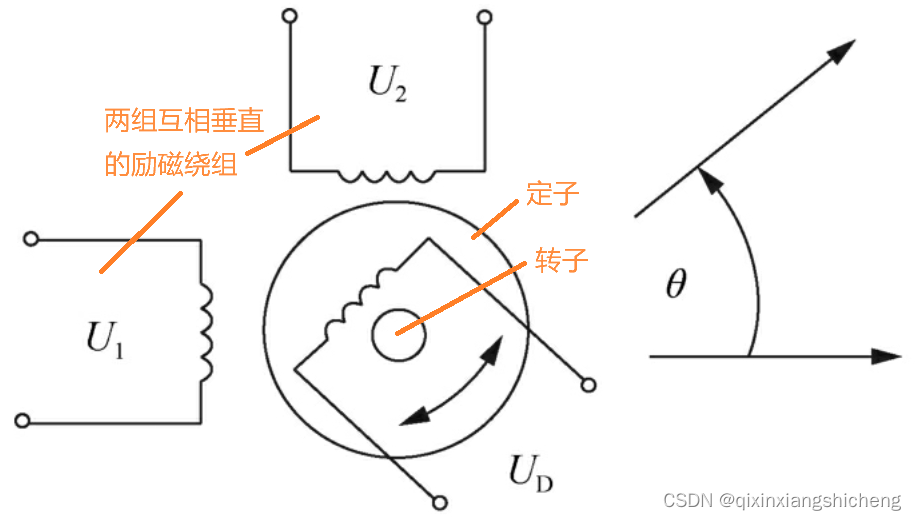
机器人内部传感器阅读笔记及心得-位置传感器-旋转变压器、激光干涉式编码器
旋转变压器 旋转变压器是一种输出电压随转角变化的检测装置,是用来检测角位移的,其基本结构与交流绕线式异步电动机相似,由定子和转子组成。 旋转变压器的原理如图1所示,定子相当于变压器的一次侧,有两组在空间位置上…...

深度学习的学习笔记帖子2
人脸数据集的介绍: https://zhuanlan.zhihu.com/p/362356480 https://blog.csdn.net/bjbz_cxy/article/details/122210641 CASIAWebFace人脸数据集等的github: https://github.com/deepinsight/insightface/blob/master/recognition/datasets/README.md…...

【机器学习学习脉络】
机器学习学习脉络 基础知识 数学基础 线性代数概率论与数理统计微积分最优化理论 编程基础 Python编程语言数据结构与算法软件工程原则 计算机科学基础 操作系统网络通信数据库系统 机器学习概论 定义与发展历程机器学习的主要任务和应用领域基本术语和概念 监督学习 线…...

golang命令行工具gtcli,实现了完美集成与结构化的gin脚手架,gin-restful-api开箱即用
关于gtools golang非常奈斯,gin作为web框架也非常奈斯,但我们在开发过程中,前期搭建会花费大量的时间,且还不尽人意。 为此我集成了gin-restful-api的模板gin-layout,还有脚手架一键生成项目。 集成相关 ginviperz…...

Qt 事件
1. 事件 事件是对各种应用程序需要知道的由应用程序内部或者外部产生的事情或者动作的通称。在Qt中使用一个对象来表示一个事件,它继承自QEvent类。 2. 事件和信号 事件与信号并不相同,比如我们使用鼠标点击了一下界面上的按钮,那么就会产生…...
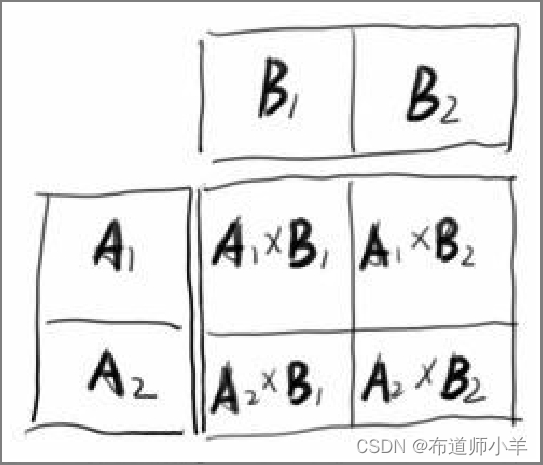
JAVA高并发——并行算法
文章目录 1、并行流水线2、并行搜索3、并行排序3.1、分离数据相关性:奇偶交换排序3.2、改进的插入排序:希尔排序 4、并行算法:矩阵乘法 1、并行流水线 并行算法虽然可以充分发挥多核CPU的性能,但并非所有的运算都可以改造成并行的…...

HTTP 与 HTTPS-HTTP 解决了 HTTP 哪些问题?
资料来源 : 小林coding 小林官方网站 : 小林coding (xiaolincoding.com) HTTP 解决了 HTTP 哪些问题? HTTP 由于是明文传输,所以安全上存在以下三个风险: 窃听风险,比如通信链路上可以获取通信内容,用户号容易没。篡改风险,比如…...

S32 Design Studio PE工具配置TMR
配置步骤 配置内容 生成的配置结构体如下,在Generated_Code路径下的lpTmr.c文件和lpTmr.h文件。 /*! lpTmr1 configuration structure */ const lptmr_config_t lpTmr1_config0 {.workMode LPTMR_WORKMODE_PULSECOUNTER,.dmaRequest false,.interruptEnable tr…...

Typescript中常用的数据类型
文章目录 概要TS的数据类型1.基础类型-- 简单的类型-- Array类型-- Object类型- 可选类型 -- Function类型- 函数的参数类型- 函数的返回值类型- 匿名函数的参数- 函数参数为对象类型- 函数的调用签名- 函数的构造签名(了解)- 剩余参数- 函数的重载(了解)- 函数的this(了解) 2.…...
)
【推荐】渗透测试面试(问题+答案)
1、介绍一下自认为有趣的挖洞经历 2、你平时用的比较多的漏洞是哪些?相关漏洞的原理?以及对应漏洞的修复方案? 3、php/java反序列化漏洞的原理?解决方案? 4、如果一台服务器被入侵后,你会如何做应急响应? 5、你平时使用哪些工具?以及对应工具的特点? 6、如果遇到waf的情…...

基于java+springboot+vue实现的美食信息推荐系统(文末源码+Lw)23-170
1 摘 要 使用旧方法对美食信息推荐系统的信息进行系统化管理已经不再让人们信赖了,把现在的网络信息技术运用在美食信息推荐系统的管理上面可以解决许多信息管理上面的难题,比如处理数据时间很长,数据存在错误不能及时纠正等问题。这次开发…...
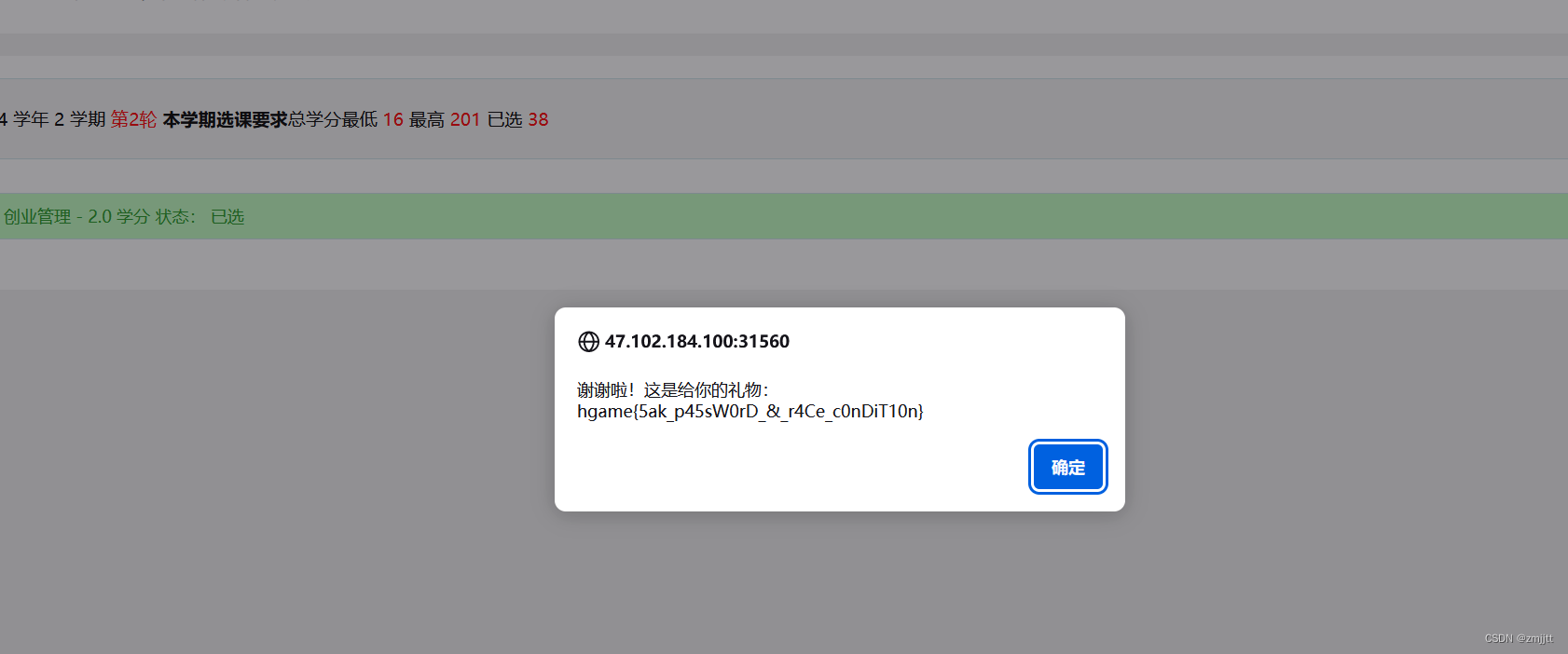
HGAME week2 web
1.What the cow say? 测试发现可以反引号命令执行 ls /f* tac /f*/f* 2.myflask import pickle import base64 from flask import Flask, session, request, send_file from datetime import datetime from pytz import timezonecurrentDateAndTime datetime.now(timezone(…...

SQL注入:网鼎杯2018-unfinish
目录 使用dirmap扫描 使用dirsearch扫描 使用acunetix扫描 爆破后端过滤的字符 绕过限制获取数据 这次的进行SQL注入的靶机是:BUUCTF在线评测 进入到主页面后发现是可以进行登录的,那么我们作为一个安全人员,那肯定不会按照常规的方式来…...

C 标准库 - <limits.h>
在C语言编程中,<limits.h> 头文件扮演着关键角色,它为各种基本数据类型定义了最小和最大限制。通过使用这些预定义的宏,程序员可以确保程序代码不会尝试存储超出特定类型范围的值。 简介 <limits.h> 头文件包含了关于不同类型&…...

《游戏引擎架构》--学习3
内存管理 优化动态内存分配 维持最低限度的堆分配,并且永不在紧凑循环中使用堆分配 容器 迭代器 Unicode...

c语言中的大小写字母转换怎么转?
在C语言中,大小写字母转换是基于ASCII码表的特性实现的。ASCII码中,小写字母从’a’到’z’的ASCII码值是连续的(97到122),而大写字母从’A’到’Z’的ASCII码值也是连续的(65到90)。它们之间有…...

java面试题之SpringMVC篇
Spring MVC的工作原理 Spring MVC的工作原理如下: DispatcherServlet 接收用户的请求找到用于处理request的 handler 和 Interceptors,构造成 HandlerExecutionChain 执行链找到 handler 相对应的 HandlerAdapter执行所有注册拦截器的preHandler方法调…...

(LeetCode 每日一题) 3442. 奇偶频次间的最大差值 I (哈希、字符串)
题目:3442. 奇偶频次间的最大差值 I 思路 :哈希,时间复杂度0(n)。 用哈希表来记录每个字符串中字符的分布情况,哈希表这里用数组即可实现。 C版本: class Solution { public:int maxDifference(string s) {int a[26]…...
。】2022-5-15)
【根据当天日期输出明天的日期(需对闰年做判定)。】2022-5-15
缘由根据当天日期输出明天的日期(需对闰年做判定)。日期类型结构体如下: struct data{ int year; int month; int day;};-编程语言-CSDN问答 struct mdata{ int year; int month; int day; }mdata; int 天数(int year, int month) {switch (month){case 1: case 3:…...

中南大学无人机智能体的全面评估!BEDI:用于评估无人机上具身智能体的综合性基准测试
作者:Mingning Guo, Mengwei Wu, Jiarun He, Shaoxian Li, Haifeng Li, Chao Tao单位:中南大学地球科学与信息物理学院论文标题:BEDI: A Comprehensive Benchmark for Evaluating Embodied Agents on UAVs论文链接:https://arxiv.…...
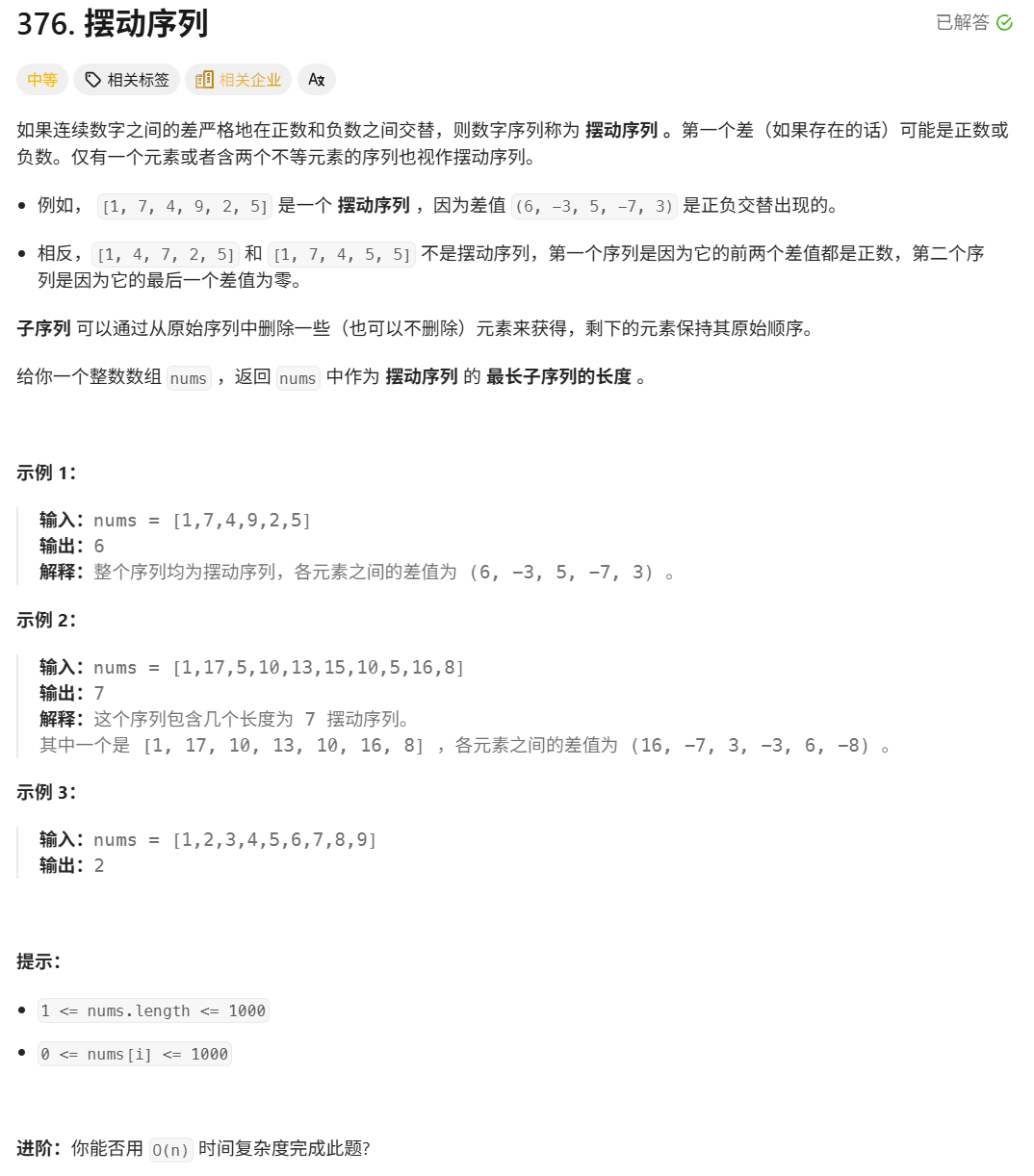
376. Wiggle Subsequence
376. Wiggle Subsequence 代码 class Solution { public:int wiggleMaxLength(vector<int>& nums) {int n nums.size();int res 1;int prediff 0;int curdiff 0;for(int i 0;i < n-1;i){curdiff nums[i1] - nums[i];if( (prediff > 0 && curdif…...
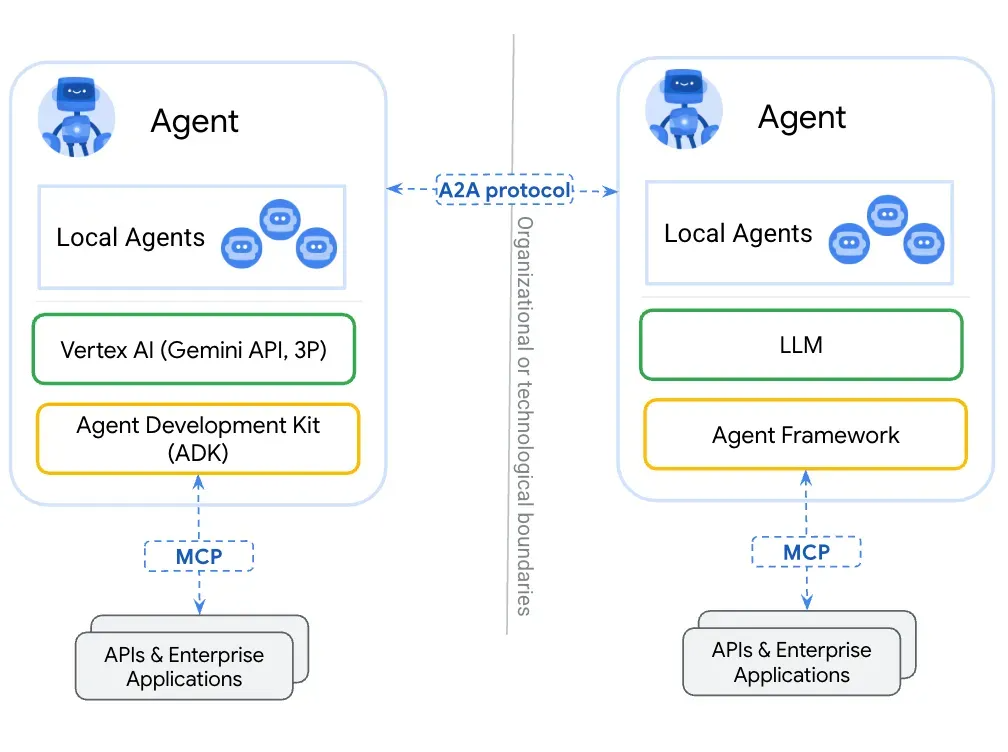
第一篇:Agent2Agent (A2A) 协议——协作式人工智能的黎明
AI 领域的快速发展正在催生一个新时代,智能代理(agents)不再是孤立的个体,而是能够像一个数字团队一样协作。然而,当前 AI 生态系统的碎片化阻碍了这一愿景的实现,导致了“AI 巴别塔问题”——不同代理之间…...

华为云Flexus+DeepSeek征文|DeepSeek-V3/R1 商用服务开通全流程与本地部署搭建
华为云FlexusDeepSeek征文|DeepSeek-V3/R1 商用服务开通全流程与本地部署搭建 前言 如今大模型其性能出色,华为云 ModelArts Studio_MaaS大模型即服务平台华为云内置了大模型,能助力我们轻松驾驭 DeepSeek-V3/R1,本文中将分享如何…...
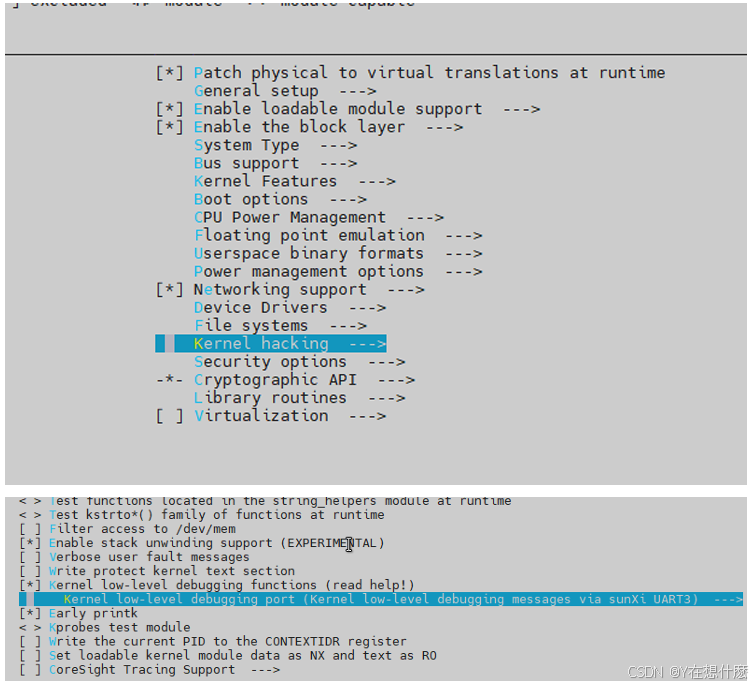
全志A40i android7.1 调试信息打印串口由uart0改为uart3
一,概述 1. 目的 将调试信息打印串口由uart0改为uart3。 2. 版本信息 Uboot版本:2014.07; Kernel版本:Linux-3.10; 二,Uboot 1. sys_config.fex改动 使能uart3(TX:PH00 RX:PH01),并让boo…...

10-Oracle 23 ai Vector Search 概述和参数
一、Oracle AI Vector Search 概述 企业和个人都在尝试各种AI,使用客户端或是内部自己搭建集成大模型的终端,加速与大型语言模型(LLM)的结合,同时使用检索增强生成(Retrieval Augmented Generation &#…...

LangChain知识库管理后端接口:数据库操作详解—— 构建本地知识库系统的基础《二》
这段 Python 代码是一个完整的 知识库数据库操作模块,用于对本地知识库系统中的知识库进行增删改查(CRUD)操作。它基于 SQLAlchemy ORM 框架 和一个自定义的装饰器 with_session 实现数据库会话管理。 📘 一、整体功能概述 该模块…...

MySQL 部分重点知识篇
一、数据库对象 1. 主键 定义 :主键是用于唯一标识表中每一行记录的字段或字段组合。它具有唯一性和非空性特点。 作用 :确保数据的完整性,便于数据的查询和管理。 示例 :在学生信息表中,学号可以作为主键ÿ…...
